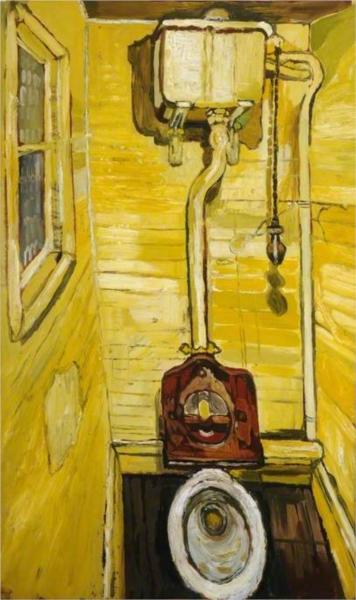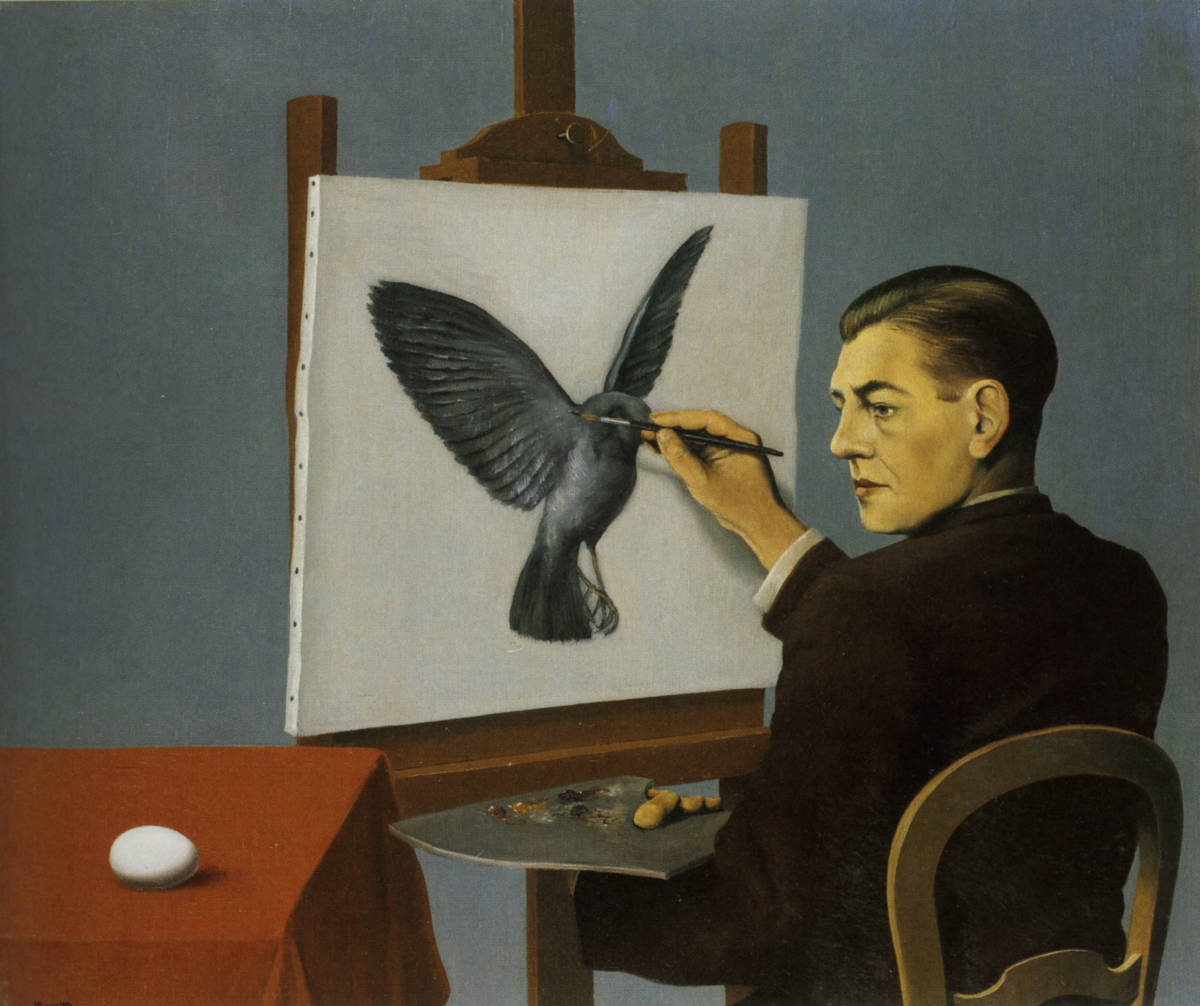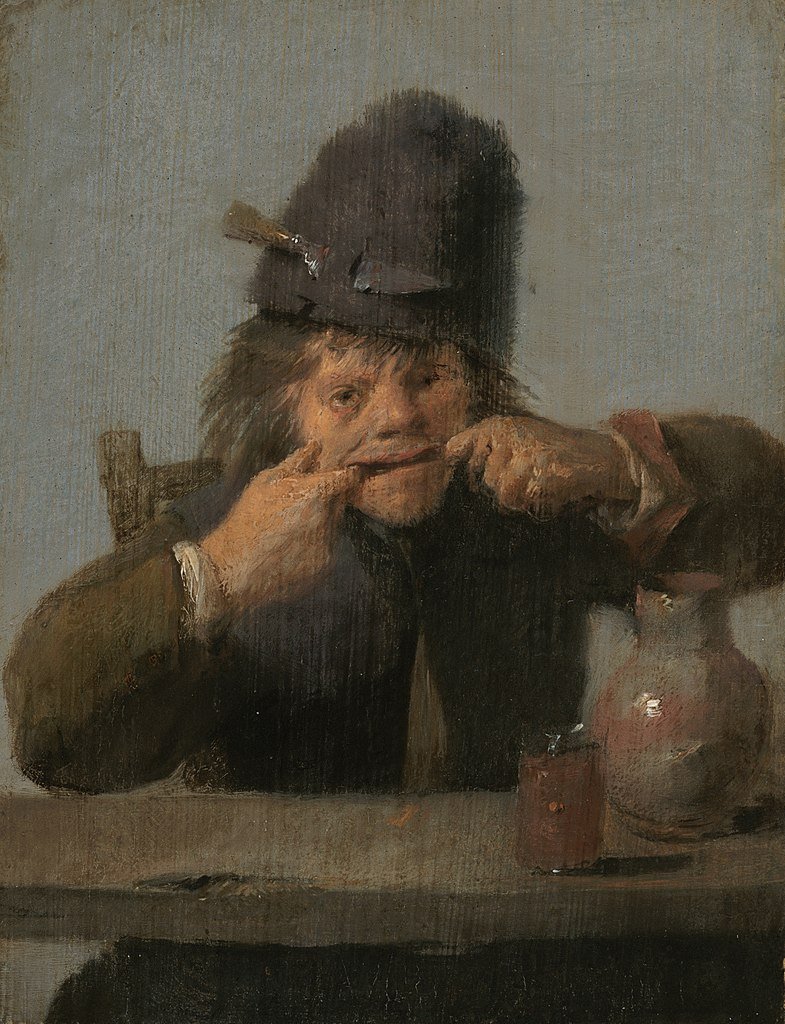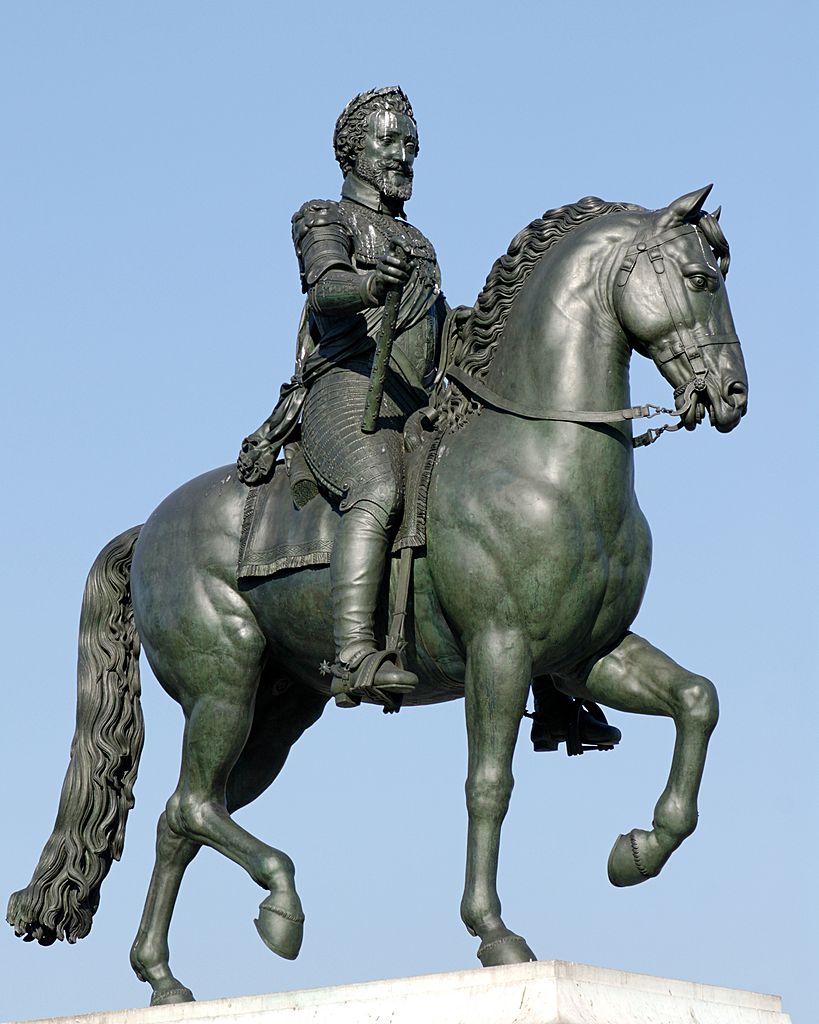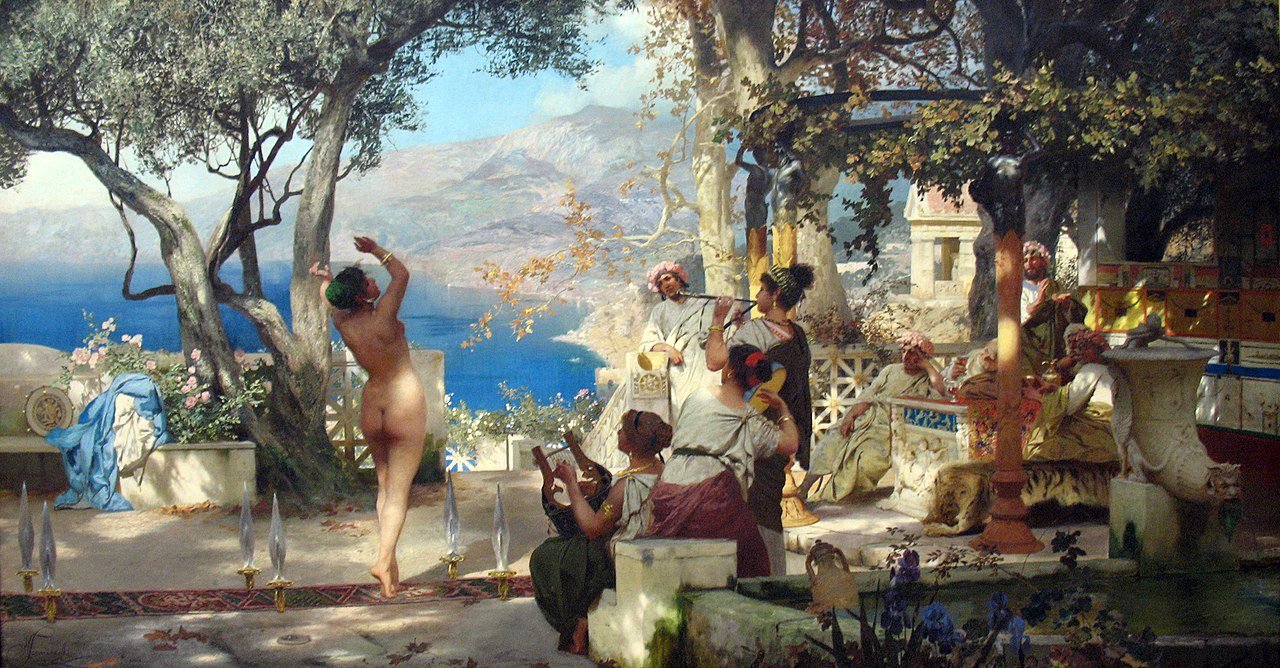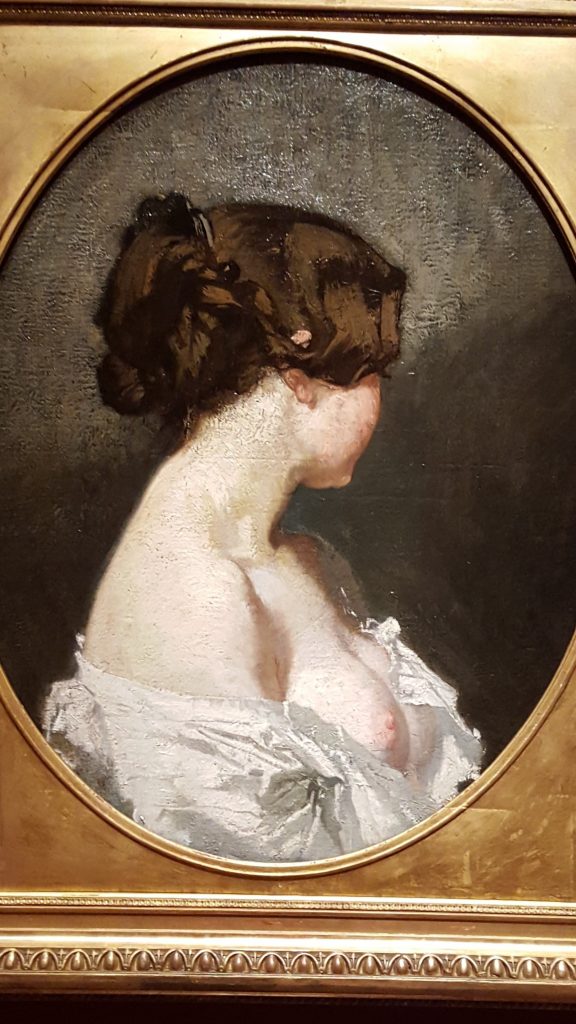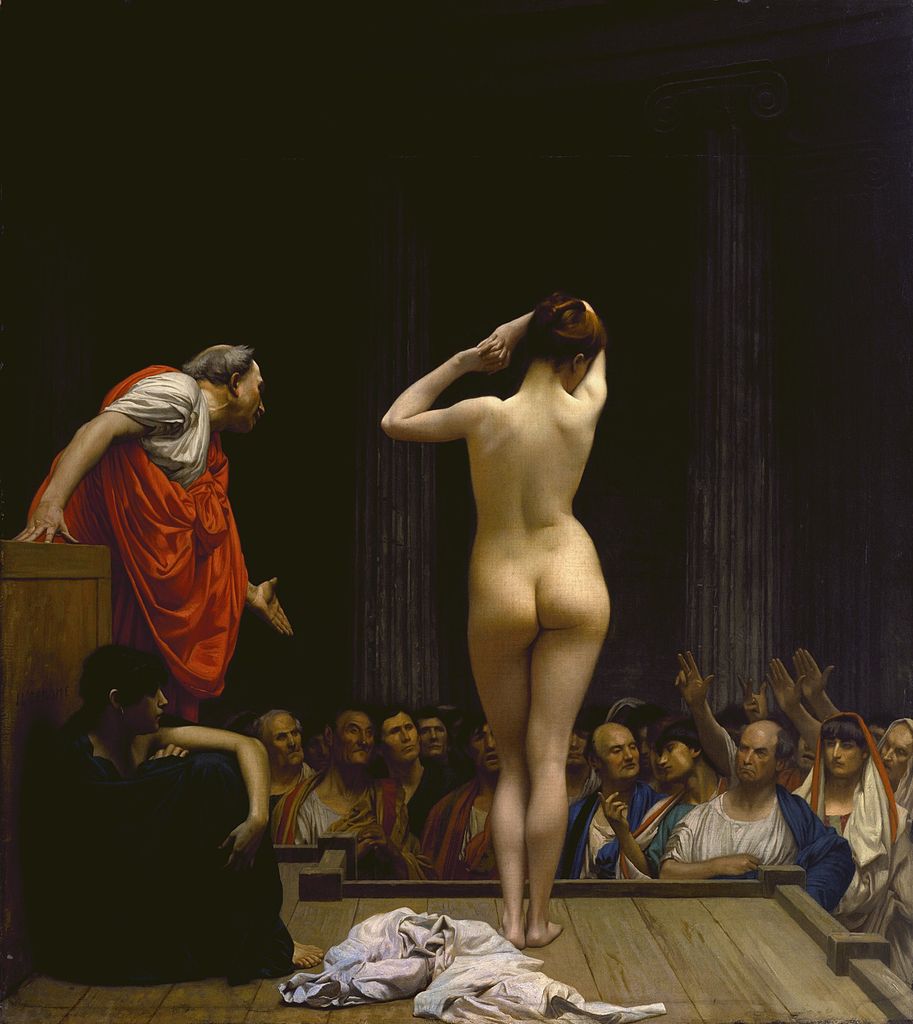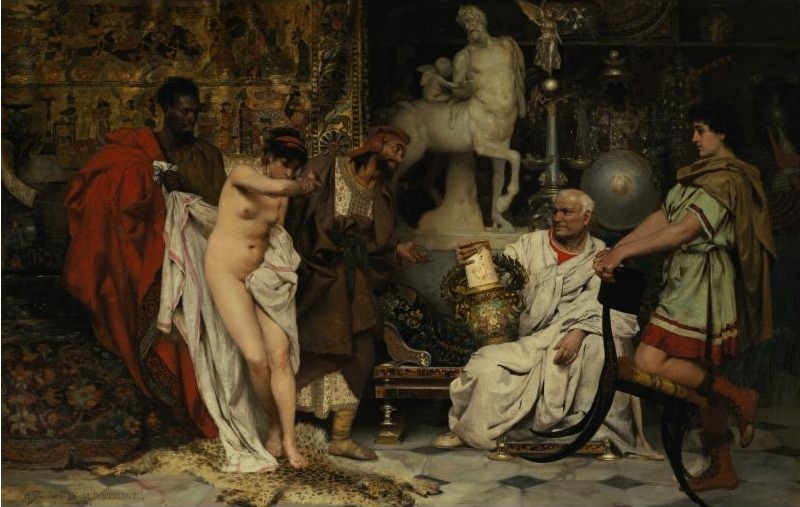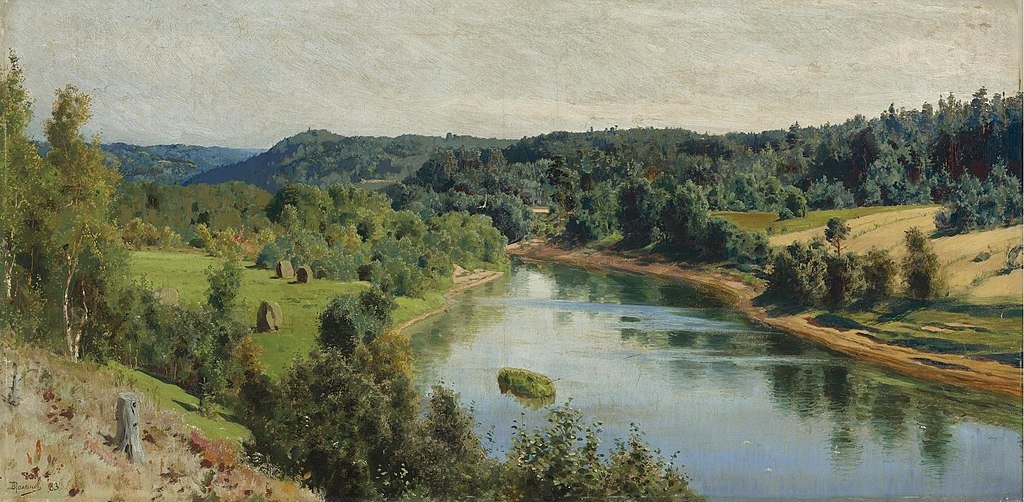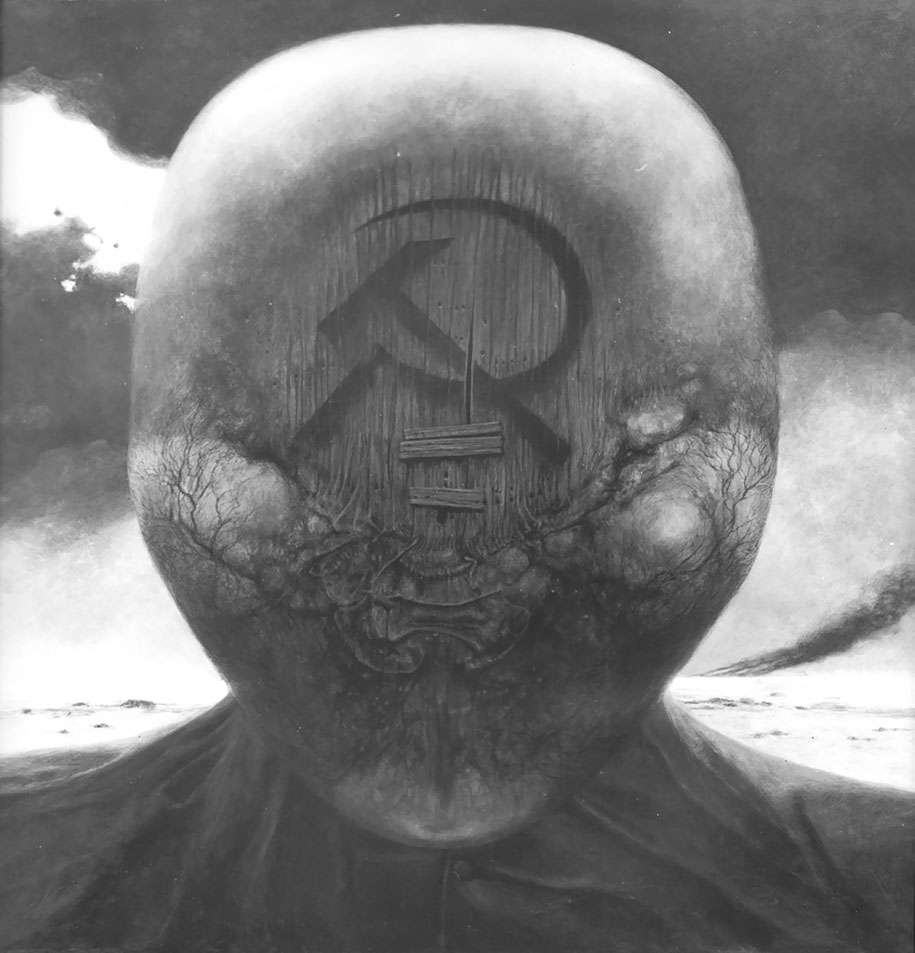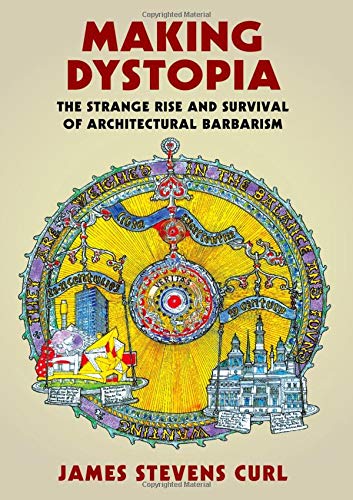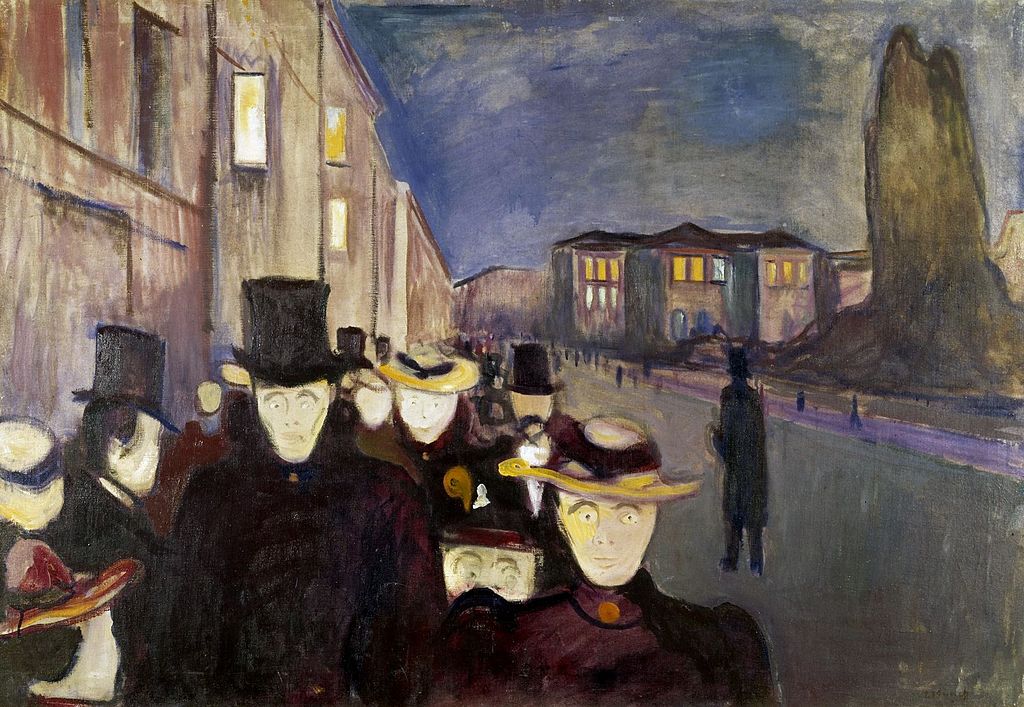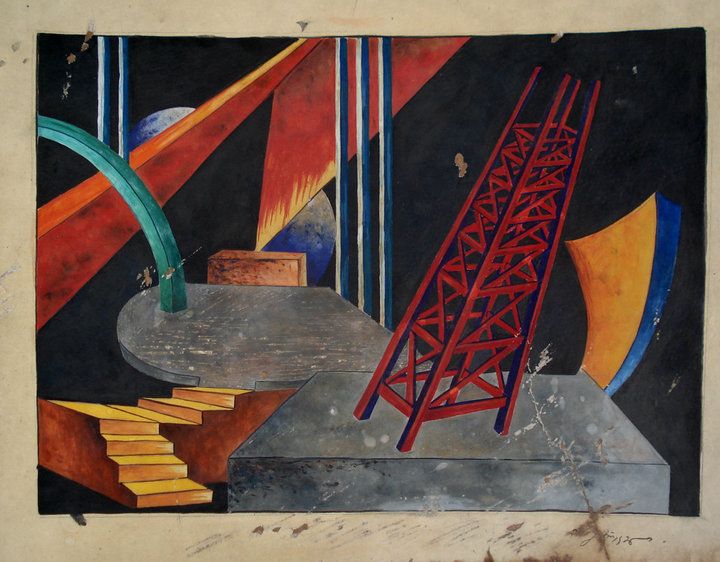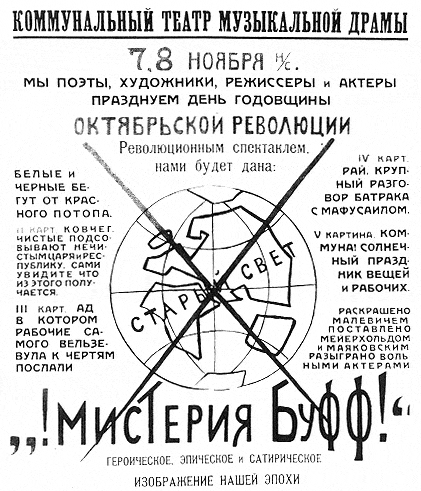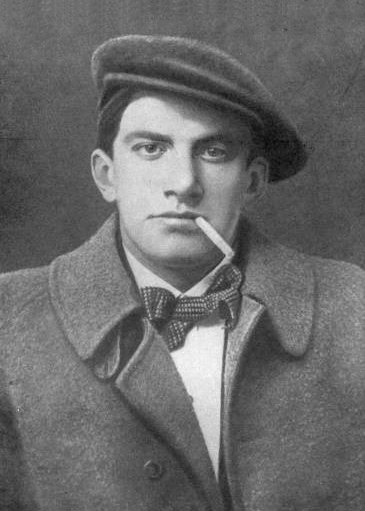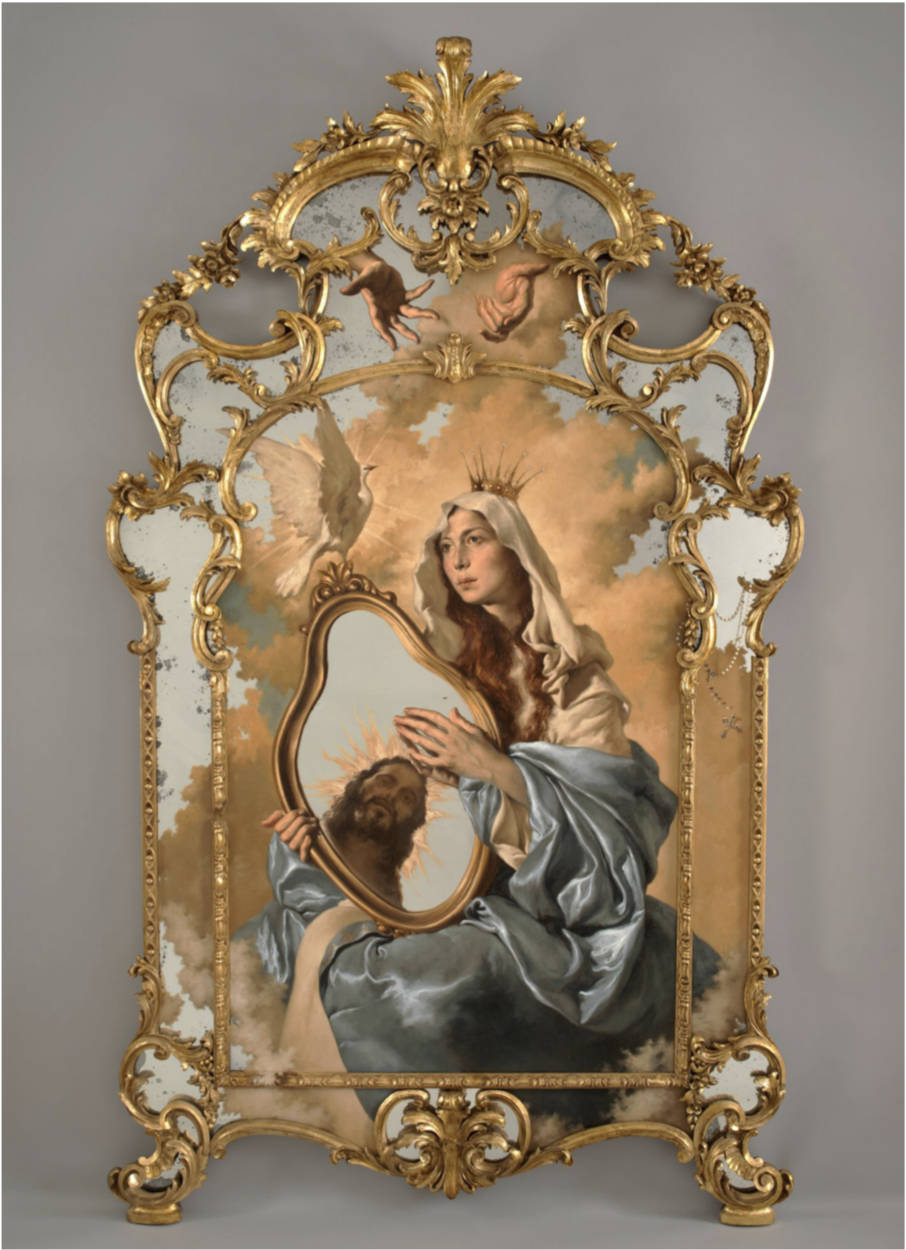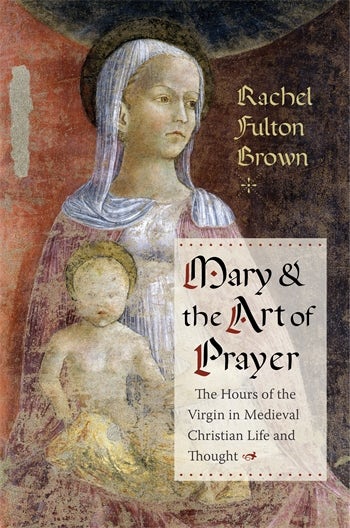High architecture, that of grand buildings, is a bridge between God and man, and a sinew binding state and people, the ruling class and the masses. Low architecture, that of daily living and daily use, is key to satisfaction in the life of a populace.
Thus, a coherent and uplifting architecture, high and low, is, and has always been, necessary for any successful society. I will return below to what architecture we should have, why, and what needs to be done to achieve it. Today, though, we most definitely don’t have a coherent and uplifting architecture, and Robert Stevens Curl, in Making Dystopia, explains what the abomination of Modernism is and why it utterly dominates our current architecture.
Curl’s aim is to prove that both architects and society have swallowed the most appalling lies, and been in thrall to the most stupid delusions, for many decades. And since architecture is not mere abstraction, but rather something that affects the lives of everyone, this is a societal disaster of the first order.
Built on propagandistic falsehoods designed to conceal the ideological nature of the project, Modernism is a cult, devoted to destroying opposition and both unwilling and unable to defend its myriad fatal debilities.
It has destroyed the urban fabric all over the globe, and thereby hugely harmed the social fabric. So-called post-modernist successors to Modernism, namely Deconstructivism and Parametricism, are little better. Curl offers no quarter; Modernism and all its works should be erased.
The author is a well-known British art historian, author of more than forty books. This book, written as an “exposé of the ideologies of those responsible for an environmental and cultural disaster on a massive scale,” with its great heft, thick paper, and numerous photographs, screams “expensive”—too expensive, in fact, for the casual reader, unfortunately.
Moreover, there is too much repetition and too much rantiness; the book could have done with less variation on the same prose points and more pictures to illustrate the innumerable references Curl makes in the text and the voluminous footnotes.
And Curl makes little or no effort to make his text accessible to someone who is a complete novice to architectural history (nor, for the same reason, is it possible for someone not well versed in architectural history, such as me, to wholly say how accurate the history Curl offers is).
The result is a book that is self-limiting. But I don’t think Curl wanted Making Dystopia to be a best-seller. I think he’s aware of the book’s limitations. He is old, and most likely his target is not casual readers, but young architects—those who have been or are being brainwashed in the vast majority of architectural schools today (the sole exception he mentions, repeatedly, is the University of Notre Dame).
I suspect that he mostly hopes that select audience will read his book as part of their education, and that he will, after he is dead, thereby help to break the stranglehold of Modernism. He even offers the reader a drawing of himself, dead in a chair, with a personified “Death come as a friend to continue ringing the warning bell.” In this context, the book as written makes perfect sense.
Most of Making Dystopia is straight history of Modernism, focusing in turn on several different times and places, alternating (often on the same page) with hammer-and-tongs attacks on Modernism.
Since any style known as “modern” risks circular definition, Curl begins with classification. Namely, that Modernism in architecture and modern design is that style “opposed to academicism, historicism, and tradition, embracing that which is self-consciously new or fashionable, with pronounced tendencies toward abstraction.”
It originated, and the word first began to be used, in the 1920s, to describe “the new architecture from which all ornament, historical allusions, and traditional forms had been expunged.” Modernism, in its 1920s post-war context, made a certain type of sense as an experimental movement.
But for reasons Curl identifies, none of which are that “Modernism is better,” it swallowed the world, becoming the global compulsory style and destroying much of the world’s urban fabric with stale, ugly, unrealistic, short-lived, and expensive buildings that did not fit their environment and made no effort whatsoever to serve their actual primary purpose—to be places in which to live and work, or to make grand statements unifying the society in which they were built. Instead, Modernism created the inhuman, uncomfortable and divisive.
Modernism as a self-limited, organically-arising, change, where the style would have soon enough have passed on like Art Deco or Art Nouveau, might have made some sense. Change is in the nature of art, and while Modernism was a rupture, not normal organic change, it could perhaps have been accommodated as one of architectural history’s dead ends.
Some of the early Modernist architecture has a certain stark beauty, after all. But why should a few architects, standing in opposition to thousands of years of organic movement, have succeeded in destroying in the way they did?
Curl chalks it up to the general turn among the taste-making classes against tradition and in favor of anything cast as “original,” which while problematic in literature or food, was disastrous in architecture, a far more public form of art with far broader consequences than fads in more ephemeral areas.
Whereas prior to the 1920s even an average architect could create nice-looking buildings that fit their purpose, in the urban landscape and for the people who lived or worked there, simply by using pattern books, now a vulgar supposed originality was required.
Modernism aimed at Utopian social engineering totally unmoored from the past. And as with other similar twentieth-century ideologues, by convincing the right people, in this case the taste-making classes and, just as importantly, big business, Modernists were successful in their engineering efforts.
Still, they required a mythology, in the way of kings fashioning false genealogies. This was provided by Nikolaus Pevsner, who in 1936 published the still-influential Pioneers of the Modern Movement (republished as, Pioneers of Modern Design), an attempt to tie admired nineteenth-century styles such as Arts and Crafts to the modernism of men like Walter Gropius.
It was Pevsner who made silly claims, believed by nearly all today, such as that the Glasgow School of Art was a Modernist building, rather than “a brilliant eclectic design, drawing on Art Nouveau themes,” which was organically derived from other styles, instead of being a rupture with them.
Curl deconstructs Pevsner at some length, giving numerous textual and pictorial examples of his “selectivity and exaggerated claims,” propaganda “based on wishful thinking,” since proving that Modernism was a rupture is key to Curl’s criticism of it. Curl’s goal is to undercut this “Grand Narrative,” which is ubiquitous among architects today, and show that Modernism has no clothes.
The real origin of Modernism was sui generis, in Germany immediately after World War I. Everything was up in the air, so architecture was too, and all the visual arts. In 1919 the Bauhaus art school was formed by Walter Gropius under government aegis.
Nominally apolitical, the Bauhaus was in fact a den of radical politics (liberally larded with nuttiness), harshly opposed to all tradition, whose artists regarded art as a necessary herald and handmaiden of political change, and human life as meaningless without reference to politics.
Although architecture was not the main focus of the Bauhaus, in the ferment of the 1920s its principles rapidly infected German au courant architectural thinking, both in terms of design and in the rejection of the need for any underlying skills in craft.
German architects in the 1920s and 1930s not only embraced Modernism, they also embraced architecture as part of system building. As Thomas Hughes discusses in American Genesis, the 1920s were the time when technological inventions became servants to their own creations, large systems built around new technology.
Modernist architects embraced this as the wave of the future—that is, the future was technology and machines, and buildings, rather than reflecting human uses, should now reflect machine uses, from electricity to motor cars.
In architecture, the Bauhaus had ties to the Deutscher Werkbund of the previous decade, a group devoted to experimentation in architecture in pursuit of integrating modern mass production techniques into industrial design, and this type of system became part of the ground for further drastic change in architectural style.
Curl offers innumerable examples, in narrative and in picture, of different architects and architecture of this time. The most influential architect to emerge from the Bauhaus was Ludwig Mies van der Rohe, who over the period from 1910 to 1930 abandoned neo-Classicism for the so-called International Style of Modernism, much of which he originated.
Mies was a self-promoter eager to work for anyone in power; he was the last director of the Bauhaus, and having tried and failed to ingratiate himself with the National Socialists, he emigrated to the United States in 1937.
Many of the German avant-garde also emigrated; they later spun stories of their opposition to Hitler, some of which were true, but as Curl points out, the Nazis were not nearly as opposed to Modernist architecture as is often suggested—they were “ambivalent,” being most definitely not conservatives, but revolutionaries, and therefore attracted to certain of the ideological underpinnings of Modernist architecture. In particular, they “accepted Modernism for industrial architecture,” as well as for quite a bit of worker housing.
While some architects outside Germany expressed interest in Modernism, especially the long-lived and ever-varied Philip Johnson, making it a niche taste among the elite, it was only when many Bauhaus and Bauhaus-sympathetic architects emigrated from Germany (the “Bauhäusler”) that the International Style actually became international.
The Bauhäusler were eagerly promoted by ideological allies in the United States and Britain, and so rapidly became extremely influential, then dominant, then utterly dominant, in the Western architectural establishment, both among professional architects and among teachers.
It was not that a great deal of actually built architecture was modernist in the 1930s and 1940s; it was that all the taste-makers decided, nearly simultaneously, that the only type of architecture that was acceptable to the elite was Modernist. Architects who objected were pilloried, cast as bourgeois, marginalized, and sidelined.
The 1930s also saw the rise to international fame of the megalomaniac Frenchman Le Corbusier, that Rasputin, who became the most successful propagandist for Modernism, and established some of its most enduring dogmas, including divorcing all buildings from their context and siting, and pretending a house could be a “machine for living.”
This process continued, and even accelerated, after 1945, when actual construction of Modernist buildings began to dominate. For the next two decades, the cult resulted in the destruction of innumerable town centers and the construction of endless shoddy and ugly buildings totally unsuited for their claimed uses and unfitted for their sites, the very opposite of their claimed “functionalism.”
Modernism was never popular among people in general, but their betters told them what they needed. Without the eager cooperation of giant corporations, though, Modernism would never have succeeded in lasting as long or being as destructive.
Part of this was ideological (similar to “woke” corporate behavior today), through a successful propaganda campaign to cast Modernist architecture as representative of “progress” and “democracy, ” part of it was the desire to make profits by participating in industrial construction techniques (which, as Curl points out, were actually mostly more expensive than the classic techniques replaced, despite the claims of their proponents) and, as with General Motors, to destroy cities to make them better for cars.
(For that latter, Curl covers the famous revolt of Jane Jacobs against Robert Moses’s planned, and partly completed, destruction of New York). Anyone who disagreed was ignored or destroyed.
Curl also spends some time on post-Modernism, a varied set of styles, of which the two most prominent were, or are, Deconstructivism and Parametricism. The former, as its name implies, is deformations of Modernism, meant to provoke anxiety and unease among viewers and users.
The latter (of which London’s Shard is an example) is an attempt to use computer algorithms to construct non-linear buildings, mostly similarly disturbing but in a different way.
“Deconstructivism and Parametricism, by rejecting all that went before and failing to provide clear values as replacements, can be seen as intentional aggression on human senses, abusing perceptive mechanisms in order to generate unease, dislocation, and discomfort… Deconstructivism and Parametricism induce a sense of dislocation both within buildings and between buildings and their contexts. . . . By breaking continuity, disturbing relationships between interior and exterior, and fracturing connections between exterior and context, they undermine harmony, gravitational control, and perceived stability, [which is] crucial to any successful architecture.”
Now, I was curious what proponents of these post-modernist styles say about them. Maybe sense is coming back into fashion. So I went and read up what Patrik Schumacher, who named Parametricism in 2008 in a “Manifesto,” said. I knew we were in trouble when Schumacher called his own style “profound.”
Then he said tripe like “It cannot be dismissed as eccentric signature work that only fits high-brow cultural icons. Parametricism is able to deliver all the components for a high-performance contemporary life process. All moments of contemporary life become uniquely individuated within a continuous, ordered texture.”
Proponents of Deconstructivism say similar things. I wasn’t surprised, though I was disappointed. It’s obvious that both styles are merely the bastard children of Modernism, as can be seen by their use of the ancient technique of obfuscation through cant.
What does Curl want to happen? He calls for a reworking of both architectural education and the relationship of the public to architecture; the public should no longer allow itself to be treated as acolytes to the priests.
“Architecture is far too important to be entrusted to the products of talking-shops: as a public art, it matters hugely, and it cannot succeed unless it connects with the public in a positive way, conveys meanings, arouses resonances, reaches back to the past and forward to the future, and has the appearance of stability.”
Mostly, he wants a realization that Modernism is awful. He wants the spell to be broken; he offers less of a specific program than, like Puddleglum in C. S. Lewis’s The Silver Chair, a stamping on the Witch’s enchanted fire and thereby recalling himself, and his friends, to what was actually real and beautiful, as opposed to the unreality the Witch was trying to sell them.
This is fine as far as it goes, but that’s not really far enough. We should ponder what is the purpose of architecture, of buildings. As Curl says, “Architecture is the one art form which plays an important role in everyday existence.”
It is frozen music. Destroy architecture and you destroy a key component in binding a society together, through its role in offering a common art and through that, a common culture.
“Without the ability to comprehend basic truths about morality and beauty . . . humans are truly lost, adrift in a sea polluted with the flotsam and jetsam of discarded toys promoted by fashion, with nothing to which they can hold fast. High culture has been suppressed, even superseded, by advertising and the mass media. . . .”
In other words, architecture is the art that binds a society together. It is an antidote to centrifugal forces, including those so common in the modern world, whose destructive force is ever-building, yet tamped down by promises of unbridled freedom and the fool’s gold of consumerism, for now.
Foundationalism, my own aborning political program, is really two things: the renewal of society, or the rebuilding of a crumbled society, and the long-term maintenance of that society, both along lines recognizing reality, with a strong bias toward traditional Western knowledge and modes of thought.
No society can long exist, much less be a strong society, without a unifying component of the spiritual, in a broader sense than simply religious. Because, as I say, a coherent and uplifting architecture is necessary for any successful society, architecture, the right architecture, is the second of the pillars of Foundationalism.
The goal of architecture under Foundationalism will be a form of emotional resonance, where all sectors and levels of society feel they have something in common that ties them together and which impels to virtue.
Since Foundationalism envisions a bound society, tied together by many threads and wholly opposed to atomistic individualism, binding forces are critical to its creation and maintenance.
In Foundationalism, architecture will not be a set of rigid beliefs, an aesthetic canon for the elite, as is Modernism; it will instead, like governance, be an organic new thing based on the wisdom of the past, intertwined with all the people, high and low.
Pushing art as part of Foundationalism may seem odd for me, since certainly I have little artistic or creative sense, and therefore cannot knowledgeably discuss architecture or any other type of art.
But I don’t need to—that’s the advantage of hewing to classic architecture traditions, that they can express any meaning desired, in a variety of languages, and offer beauty and continuity, along with enough originality to prevent seeming calcified. Foundationalism has no need to create anything that is new, though some organically developing novelty is to be expected.
Oh, I am sure there is a great deal more that someone knowledgeable can say about architecture as aesthetics, and how that matters to a society. Roger Scruton has written a whole book on it (The Aesthetics of Architecture) which I am sure it would be immensely profitable to read.
But a careful, philosophical parsing of architecture and society isn’t what I’m after. I oppose instrumentalism as the lens for viewing human beings; I am not so much opposed to instrumentalism in the works of men’s hands. What I care about is the function architecture will play under Foundationalism, and the implementation of that function.
The general type of high architecture necessary for this is entirely clear. As Wolfgang Schivelbusch said in Three New Deals, “Scholars gradually recognized neoclassical monumentalism—whether of the 1930s, the Renaissance, the French Revolution, or the Napoleonic empire—for what it is: the architectural style in which the state visually manifests power and authority.”
Neoclassical monumentalism, let’s be honest, impresses everybody. You are lying if you think Le Corbusier holds a candle to, say, the Jefferson Memorial. True, there are limits to this.
The monstrous proportions of buildings proposed, but never built, by Hitler and Stalin take this arc too far, becoming anti-human and enshrining the state as a false god (the Amazon series The Man in the High Castle portrays many of these buildings as if-built; this reality comes through clearly).
Any such program, especially one perceived as right-wing, therefore has an uphill battle, since the gut reaction is that here Albert Speer reborn. But monumental classicism has a long history apart from the regimes of the 1930s (which, as Curl points out, often approved of Modernism, especially Mussolini’s Italy).
And anyway, when my program is being put into place, those who would complain the loudest in that ideological vein will be picking sugar beets in Saskatchewan as part of my rustication and lustration program for those who did the most damage to our society.
Therefore, as far as high architecture controlled by the state, Foundationalism will kill two birds with one stone—every ugly government building built since the 1940s will be torn down, and to the extent new ones are needed, neoclassical buildings will go up. A lot fewer will go up than are torn down, since there will be far fewer government employees.
The extra land will be given over to parks, or perhaps public buildings tangential to government, such as libraries, which will also be done in classical style. Since we will not be exalting government as such, or government workers, we will not need giant new halls to act as the focus for our rulers; most new buildings will be actual monuments or multi-use, Roman Forum-type constructions.
(There will be, of course, government, and strong government. It will have limited ends, though, even if unlimited means, and will not aspire to order every aspect of daily life—far less than our current government does). And no private creation of any significant ugly building, Modernist or other, will be permitted. Those that exist already will be torn down as resources permit.
What of low architecture, that of daily life, of houses and workplaces? There, too, forms of classical architecture will be strongly encouraged, but the goal will be less monumentalism and more organic coherence with how people actually live and work, combined with beauty and the inspiration and joy in living that comes as a result.
The government will not mandate such architecture, as it will with high architecture, but rather encourage it, through education and subsidy. Such encouragement will take the form of only allowing government funding, and student loans (if those still exist) for architectural schools that, at a minimum, teach the execution of classic architecture as a priority.
All government contracts will only go to approved architecture, as will tax benefits for privately constructed buildings, which will, over time, ensure that architects tend to gravitate to where the money is.
The Foundationalist state will seek ways to ensure that honor and prestige, as well, accrue to architects of preferred styles. Moreover, given the well-known association of the Left with Modernism (something Curl spends a fair bit of time on, focusing on the nihilism and destructiveness common to both), since the Foundationalist state will, as its very first act, utterly and permanently break the power of the Left, that alone will clear the way for traditional architecture to rebound from the boot that Modernism has placed on it for so many decades.
Other aspects will have to be worked out; this is not an ideology, but a set of principles to use. (Prince Charles has recently put forth ten principles that are a good place to start, in a December 2014 article in The Architectural Review; he is pretty odious otherwise and not very bright, but he has always been sensible on architecture).
It is worth noting that Foundationalism does not idolize agrarianism. The rural life and culture has its place, and nature and its forms influence good architecture, but high culture, and the drive to create a successful society, always revolves around cities.
Foundationalism strives to offer a goal for, and outlet for, and inspiration for, human aspiration, and rural life does not build spaceports (aside from today not occupying the daily life of any significant percentage of the population).
And the Foundationalist state will take a similar approach to other art (though a more restrained one, since architecture is the most important art for the state), and we will return to the traditional approach where artists work in cooperation with the pillars of society, state and private, rather than being destructive agents of the Left as they mostly have been for the past century (a topic I intend to discuss the whys and wherefores of at some point, as it is not the natural order of things).
And, at that point, Making Dystopia will have accomplished the goals of its author, and be merely a chronicle of an overly long, and overly destructive, but fortunately vanished, period of architectural and societal distress.
Charles is a business owner and operator, in manufacturing, and a recovering big firm M&A lawyer. He runs the blog, The Worthy House.
The photo shows an Untitled piece by Zdzisław Beksiński.
